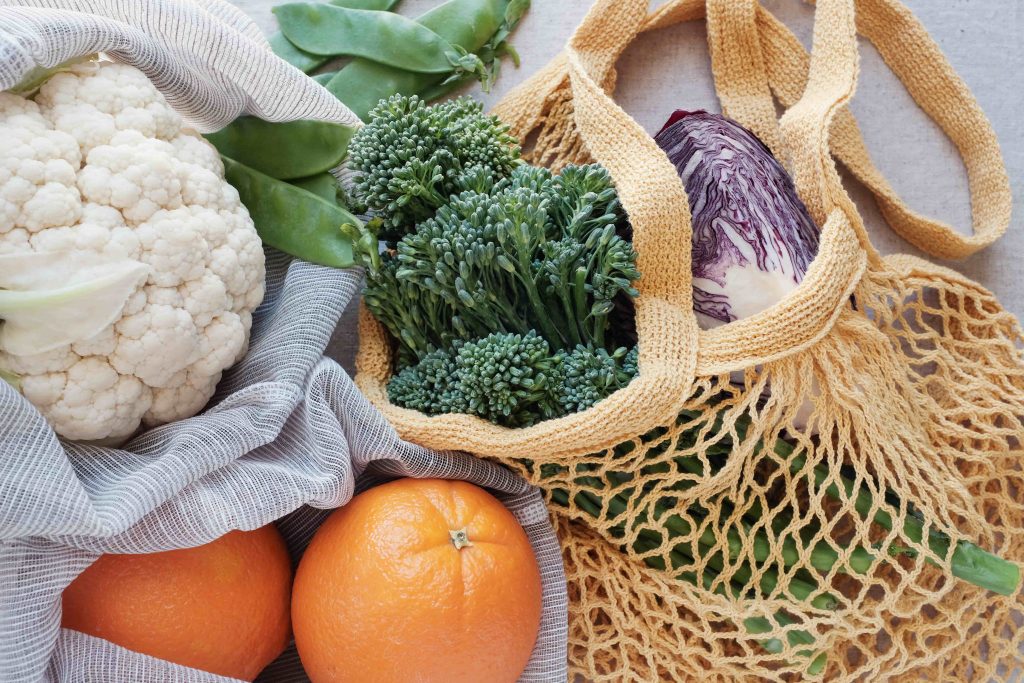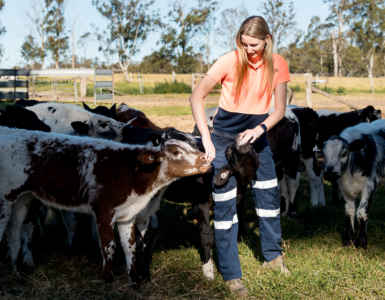Ever wondered how much food our farmers produce each year, how much water farmers use or how many Australian farms are family owned?
We’ve revealed 5 things you most likely don’t know about Australian agriculture, keep reading to find out more!
1. Farmers manage 51% of Australia’s land mass
Australia has a land mass spanning more than 769.2 million hectares. Farmers manage over half of this – 51% to be exact.
From managing the soil, natural vegetation and water ways, everyday farmers are taking care of Australia for us and generations to come, all while producing the food and fibre we rely on.

Farmers, like Natalie Sommerville and her family, care for a collective 51% of the Australian landscape. Nat runs sheep and grows grain on her 5000 hectare property near Clare in South Australia.
2. Farmers are leading Australia’s emissions reduction efforts
Since 1996 Australian farmers have reduced their greenhouse gas emissions intensity by 63% (from 1996-2016). Agriculture is in a unique position. While some agricultural practices do generate emissions, there are many ways in which farmers also sequester carbon, through pasture, trees plantings and crop rotation.
Australia’s red meat industry has a goal to be carbon neutral by 2030, which if achieved will be world leading. Australia’s farm sector has committed to an economy-wide net carbon zero target by 2050.

Agriculture is at the heart of Australia’s action on climate change. Many farmers, like the Price family, near Canberra, are combining renewable energy production with traditional farming.
3. Farmers are expert at water management
Australia is the second-driest continent in the world, with an average annual rainfall of than 600mm across 80 per cent of the country. Our farmers are therefore expert at growing food and fibre with very little water.
Australian cotton growers for example, are amongst most water efficient in the world thanks to advancements in irrigation systems and plant breeding. Australian cotton growers have improved their water use efficiency by 48% since 1992.
Similarly, Australian rice growers uses 50% less water than the global average. Over the past 10 years, Australian rice growers have improved their water use efficiency 60% while also increasing the amount of rice they grow.
Australia’s most popular crop, grain, is also leading the way in water efficiency efforts with data from 1982 – 2012 showing that many wheat growing regions across Australia have improved water efficiency by between 50 and 100 per cent.

Cotton farmers like Amanda and Ben Thomas, of Warren in western NSW, have cut the amount of water needed to produce one bale of cotton by half in just 20 years.
4. 99% of Australian farms are family-owned
According to 2016 data from ABS, there are about 85,690 farm businesses in Australia, 99 percent of which are owned and operated by Australian families.
Data from 2018/19 shows that the average age of a farmer is 58 years of age with 77% of farmers male.

Farming at Holbrook in southern NSW, Jamie and Andy Ingle and their children Jonte and Issy are one of 85,690 Australian farming families.
5. On average each farmer grows enough food to feed 600 people
Each Australian farmer produces enough food each year to feed on average 600 people, 150 at home and 450 overseas. Australian farms produce around 93 per cent of the total volume of food consumed in Australia.
Two-thirds of what our farmers produce each year is exported for the world to enjoy. Unlike in other countries, Australians’ access to home-grown, quality, safe food is extremely secure.








































Add comment